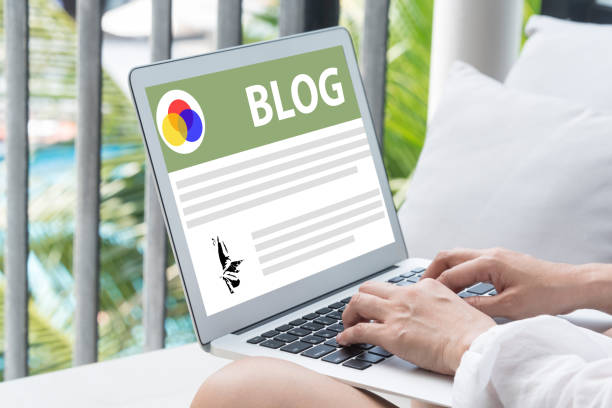How To Describe Flashback Scenes In Writing (12 Steps You Need To Know)
Introducing readers to the art of describing flashback scenes in writing is akin to inviting them on a captivating journey through time within the pages of a story.
Flashbacks, those narrative windows into a character’s past, are potent tools that, when wielded skillfully, can breathe life into a narrative, deepen character development, and illuminate the story’s themes.
They are the cinematic moments within the written word, allowing readers to step back in time and witness events, emotions, and revelations that hold pivotal importance.
In this exploration, we will delve into the nuanced techniques and strategies that enable writers to craft flashback scenes with vividness, authenticity, and narrative impact, ensuring that the past seamlessly merges with the present, leaving an indelible mark on the reader’s literary experience.
How To Describe Flashback Scenes In Writing
Describing a flashback in writing involves taking your readers back in time to provide context or background information. Here’s a step-by-step process to effectively incorporate a flashback into your writing:
Establish the Need
Determine why you need a flashback. Is it to reveal crucial backstory, explain a character’s motivation, or add depth to the plot? Ensure that the flashback serves a purpose and enhances the story.
Transition
Create a clear transition that signals the shift from the present to the past. This could be a sentence or phrase that indicates the change in time, such as “In the summer of 1995…” or “As she reminisced about her childhood…”
Set the Scene
Describe the setting and the characters in the flashback. Paint a vivid picture of where and when this memory takes place. Use sensory details to immerse the reader in the past.
Character Perspective
Make it clear whose perspective the flashback is from. Is it the protagonist’s memory, a secondary character’s recollection, or an omniscient narrator’s insight? Stay consistent with the point of view.
Action and Dialogue
Show events or conversations that are relevant to the story’s progression. Use dialogue and actions to reveal key information, character development, or plot points from the past.
Emotions and Reflection
Explore the emotions and thoughts of the character experiencing the flashback. What do they feel or think as they revisit this memory? How does it impact their present circumstances?
Duration
Keep the flashback concise. Readers should be able to return to the main storyline without feeling lost. A few paragraphs or pages are usually sufficient, depending on the significance of the memory.
Transition Back
After conveying the necessary information or emotions from the past, smoothly transition back to the present. Use a clear indicator like “Returning to the present…” or “Snap back to reality…”
Reflect on Impact
Allow the character or narrator to reflect briefly on the flashback’s significance and how it relates to their current situation or decision-making.
Integrate Seamlessly
Ensure that the flashback flows seamlessly within the narrative. Avoid abrupt shifts that may confuse the reader.
Edit and Revise
Review the passage containing the flashback. Make sure it serves its purpose effectively and doesn’t disrupt the overall pacing of your story. Edit for clarity, coherence, and relevance.
Beta Reader Feedback
If possible, have beta readers review the flashback section. Their feedback can help you gauge whether the flashback resonates with your audience and if any adjustments are needed.
Remember that not every story requires a flashback, and excessive use can hinder the narrative flow. Use flashbacks sparingly and purposefully to enhance your storytelling.

Pre-writing Preparation
Pre-writing preparation is like forging the very blueprint of your literary masterpiece, a symphony of anticipation before the first word ever graces the page.
It’s the sculptor’s contemplative gaze before the chisel meets marble, the alchemist’s moment of alight with possibilities before the potion brews.
It’s your treasure map in the uncharted territory of creativity, where understanding the narrative landscape, plotting the emotional terrain, and choosing the perfect moment to unveil your story’s secrets become your sacred rites.
Pre-writing preparation is where the author is both architect and archaeologist, shaping not just words but worlds.
Understand the narrative context
Understanding the narrative context is akin to deciphering the intricate threads of a story’s tapestry. It’s the compass that guides us through the labyrinth of words, ensuring that every twist and turn serves a purpose.
Just as a detective scrutinizes clues to solve a mystery, an author delves into the depths of their own creation to unravel the essence of their narrative.
This understanding allows writers to navigate the vast sea of possibilities, ensuring that characters, plotlines, and themes align seamlessly, creating a cohesive and engaging literary journey for the reader.
In this intricate dance between intention and execution, comprehending the narrative context is the foundation upon which the entire edifice of storytelling is built, and it is the hallmark of a masterful wordsmith.
The purpose of the flashback
The purpose of a flashback in storytelling is akin to a cinematic pause in time, a momentary deviation from the main narrative that carries profound significance.
It serves as a window into the past, a lens through which readers can explore the depths of a character’s history, motivations, and emotional landscape.
Flashbacks are the storyteller’s tool for unraveling mysteries, for revealing secrets long buried, or for shedding light on pivotal moments that continue to shape the present.
They add layers of complexity to characters and narratives, allowing readers to witness growth, transformation, or the haunting echoes of past traumas.
In essence, the purpose of a flashback is to enrich the storytelling experience by providing context, depth, and a deeper connection between the reader and the characters, ultimately enhancing the power and resonance of the entire narrative.

Setting the Stage
Setting the stage in writing is the poet’s palette, the composer’s overture, and the director’s grand opening scene all rolled into one.
It’s where the alchemy of words conjures entire worlds within the reader’s mind. From the gentle rustle of leaves in a serene forest glade to the electric hum of a futuristic metropolis, the stage is where the writer crafts an immersive experience that tantalizes the senses and awakens the imagination.
In the art of storytelling, setting the stage isn’t mere background; it’s a mesmerizing performance waiting to steal the show.
Establish a strong point of view
Establishing a strong point of view in writing is akin to donning a pair of bespoke glasses through which the reader views the world of the story.
It’s the lens that defines the narrative perspective, casting a unique hue on every character, event, and emotion. Whether it’s the intimate embrace of first-person, the omniscient gaze that peers into the souls of characters, or the selective insights of third-person limited, the chosen point of view is the narrative heartbeat.
It not only shapes whose thoughts we hear but also dictates how much we can truly know about them.
A strong point of view isn’t just a stylistic choice; it’s the voice that guides us through the literary labyrinth, grounding the reader in the story’s universe and ensuring a deeply immersive and unforgettable journey.
Describe the physical environment
Describing the physical environment in writing is akin to painting a masterpiece with words, where the setting becomes a living, breathing entity in the narrative. It’s about summoning landscapes that are not just backdrop, but a rich tapestry interwoven with the essence of the story.
From the towering skyscrapers of a bustling city to the serene, whispering woods of an ancient forest, the physical environment becomes more than just a backdrop; it’s a character in its own right, influencing moods, actions, and the very essence of the tale.
Through vivid, sensory details, the writer can transport readers to distant realms, evoke the pungent scent of rain-soaked earth or the icy chill of a desolate tundra.
In this way, the physical environment breathes life into the narrative, setting the stage for the unfolding drama and engaging the reader’s senses, ensuring that the story lingers in their mind long after the last page is turned.
Evoke the time period
Evolving the time period in writing is akin to conjuring a portal to a bygone era, where the past unfurls before the reader like a living tapestry of history.
It’s about more than just mentioning dates or historical events; it’s about immersing the reader in the sights, sounds, and ethos of a specific time.
Whether it’s the roaring twenties with its jazz-age exuberance or the smoky intrigue of a Victorian London fog, evoking the time period adds layers of authenticity and atmosphere to the narrative.
Through meticulous research and evocative prose, the writer can transport readers to another age, allowing them to taste the era’s flavors, breathe its air, and walk its cobbled streets.
In doing so, the time period becomes not just a backdrop but a dynamic force that shapes characters, influences their choices, and ultimately deepens the storytelling experience, leaving an indelible mark on the reader’s imagination.
Characterization
Characterization in writing is akin to the delicate art of crafting human souls from the fabric of words. It’s the alchemy that turns ink and paper into living, breathing individuals who dance upon the stage of imagination.
These characters aren’t just inked figures; they are the architects of empathy, the catalysts of emotions, and the guides through the labyrinthine landscapes of the story.
Writers, like master sculptors, chisel away the excess to reveal the inner workings of their creations—their fears, hopes, quirks, and dreams.
Through the nuances of their personalities and the subtleties of their interactions, characters become more than words; they become companions on a literary journey, leaving an indelible imprint on the reader’s heart and mind.
In the hands of a skilled writer, characterization transcends the page, weaving a tapestry of humanity that resonates long after the story’s end, a testament to the enduring power of storytelling.
Develop the flashback characters
Developing flashback characters is akin to breathing life into the echoes of the past, allowing them to walk the corridors of memory with purpose and authenticity.
These characters, though glimpsed through the hazy veil of time, should feel as vivid and complex as those in the present narrative. Just as an artist adds layers of detail to a canvas, the writer fleshes out these characters, endowing them with distinct personalities, desires, and motivations.
Through their actions, dialogue, and inner thoughts, they come alive, stepping from the shadows of history to illuminate the significance of the flashback.
The depth of their portrayal not only enriches the storytelling experience but also serves as a bridge connecting the past to the present, forging emotional bonds with the reader and bringing resonance to the narrative’s temporal dance.
Highlight the protagonist’s emotional state
Highlighting the protagonist’s emotional state in writing is akin to unveiling the heart’s innermost secrets, laying bare the raw, unfiltered essence of the character’s journey.
It’s the subtle tremor in their voice, the silent storm in their eyes, and the silent symphony of emotions that surge beneath the surface.
As writers, we become emotional archaeologists, excavating the layers of our protagonist’s soul, revealing the vulnerabilities, scars, and aspirations that define their humanity.
Through evocative prose and introspective narration, we offer readers an intimate glimpse into the protagonist’s emotional landscape, inviting empathy and connection.
These emotions, like the brushstrokes of a painter, infuse life into the narrative, fueling the character’s growth, choices, and ultimate transformation. In this delicate dance between character and reader, the protagonist’s emotional journey becomes a mirror reflecting the universal human experience, leaving an indelible mark on the hearts of those who embark on the literary voyage.
Create relatable relationships
Creating relatable relationships in writing is akin to weaving the intricate tapestry of human connection, where characters’ bonds resonate with readers on a deeply personal level.
These relationships are the emotional core of a story, reflecting the complexities of love, friendship, or conflict that we encounter in our own lives. Just as a composer orchestrates harmonies and discord, a writer crafts interactions that feel authentic, evoking empathy and recognition.
Whether it’s the enduring camaraderie between friends, the tumultuous dynamics of a family, or the electric chemistry of a romantic partnership, these connections breathe life into the narrative.
Through genuine dialogue, shared experiences, and the nuanced ebb and flow of emotions, relatable relationships draw readers into the story’s heart, allowing them to see themselves in the characters and forging a lasting emotional bond between page and reader.
Crafting Dialogue
Crafting dialogue in writing is akin to composing a symphony of voices, each note resonating with the power to captivate, amuse, or pierce the soul. It’s the art of imbuing words with life, transforming mere text into vibrant conversations that dance across the page.
Dialogue isn’t just characters speaking; it’s a portal into their minds and hearts, revealing their quirks, motivations, and secrets.
A masterful writer knows that dialogue is a delicate dance of nuance and subtext, where what is left unsaid can be just as powerful as spoken words.
It’s the banter that crackles with wit, the confessions that linger in the air like a promise, and the conflicts that sear like lightning. In this realm of dialogue, every word is a brushstroke on the canvas of character, and every exchange a glimpse into the human condition, making it an irreplaceable brush in the writer’s artistic palette.
Use authentic dialogue
Using authentic dialogue in writing is akin to capturing the cadence of real-life conversations, making the characters and their interactions feel genuine and relatable.
It’s about more than just words; it’s about imbuing dialogue with the unique rhythms and idiosyncrasies of each character’s voice.
Authentic dialogue isn’t a mirror of reality but a distilled essence, where every word serves a purpose, revealing character traits, advancing the plot, or conveying underlying emotions.
By paying attention to the subtleties of speech patterns, regional expressions, and the distinct personalities of characters, writers can create a symphony of voices that resonate with readers, drawing them deeper into the narrative.
In this way, authentic dialogue becomes a bridge between the fictional world and the reader’s own experiences, enriching the storytelling tapestry and creating connections that endure long after the final page is turned.
Balance dialogue with narrative
Balancing dialogue with narrative in writing is akin to orchestrating a harmonious duet between characters and the world they inhabit.
It’s the delicate art of interweaving spoken words with descriptive prose to create a seamless and immersive reading experience. Too much dialogue can feel like eavesdropping on a conversation without context, while an excess of narrative can drown out the voices that bring characters to life.
Striking the right equilibrium allows for character-driven revelations, the advancement of the plot, and a deeper understanding of the setting.
Narrative provides the stage, describing the tone, emotions, and physical surroundings, while dialogue injects vitality, revealing character motivations and interpersonal dynamics.
The dance between dialogue and narrative is where characters breathe, emotions resonate, and the story flourishes, ensuring readers are both spectators and participants in the unfolding drama, leading to a literary experience that lingers long after the book is closed.
Make dialogue purposeful
Making dialogue purposeful in writing is akin to crafting a symphony where every note contributes to the overarching melody of the narrative.
It’s about ensuring that spoken words are not mere chatter but essential components of character development, plot progression, or thematic exploration.
Purposeful dialogue is the art of revealing, concealing, or challenging ideas and emotions, pushing the story forward while adding depth to the characters. It allows readers to glean insights, empathize with conflicts, or uncover hidden motivations.
Writers sculpt conversations to carry weight, to spark change, or to underline the essence of a scene.
In this tapestry of words, every line spoken is a brushstroke of meaning, resonating with significance, and weaving a narrative that is not just heard but felt, leaving an indelible impression on the reader’s literary journey.
Flashback Narrative Structure
The flashback narrative structure is like a masterful illusionist’s sleight of hand, bending the very fabric of time to reveal hidden truths and secret chambers within the story.
It’s a literary wormhole where past and present collide in a mesmerizing dance, leaving readers breathless as they traverse the corridors of memory.
In this narrative feat, writers become architects of time, seamlessly transitioning between then and now, orchestrating revelations with the finesse of a conductor directing a symphony.
The flashback narrative structure is the art of constructing a literary time machine, inviting readers to witness the evolution of characters, the roots of conflict, and the unveiling of mysteries.
It’s the ultimate testament to the writer’s power to manipulate time, shaping a narrative that not only intrigues but immerses, making the past an inextricable part of the present, leaving readers forever entangled in its enigmatic embrace.
Emotional Resonance
Emotional resonance in storytelling is the ethereal heartbeat that transcends ink and paper, forging an unbreakable connection between the narrative and the reader’s soul.
It’s the indescribable shiver down the spine when words on a page evoke tears, laughter, or profound reflection. Like an alchemist’s elixir, it transforms characters’ joys and sorrows into universal emotions, allowing readers to see their own lives reflected in the mirror of fiction.
Emotional resonance isn’t just about empathy; it’s the symphony of shared humanity, where the written word becomes a bridge to our own experiences, memories, and aspirations.
In this enchanting dance between writer and reader, emotional resonance is the magic that turns storytelling into an unforgettable journey, leaving an indelible mark on the heart, and a whisper in the soul, long after the book is closed.
Build emotional tension
Building emotional tension in writing is akin to tightening the strings of a suspenseful melody, each note resonating with increasing intensity.
It’s the art of crafting a narrative that keeps readers on the edge of their seats, hearts racing, and emotions taut. Emotional tension is the suspenseful undertow that swirls beneath the surface of a story, compelling readers to turn the page, driven by a burning desire to uncover the characters’ fates.
It’s the intricate dance between hope and fear, desire and obstacles, love and conflict.
As writers, we are the puppeteers of emotions, pulling the strings to create a symphony of anticipation, and when the crescendo finally breaks, it leaves readers breathless, fulfilled, and forever bound to the characters and their journey.
Connect past and present emotions
Connecting past and present emotions in writing is akin to weaving a delicate thread through the tapestry of time, creating a profound resonance that lingers in the reader’s heart. It’s the art of showing how the echoes of bygone moments continue to reverberate in the present, shaping characters’ actions, thoughts, and relationships.
Past and present emotions are interwoven, like two dancers in an intricate duet, each step echoing the other.
This connection allows readers to witness the profound impact of history on the characters’ current lives, forging a deeper understanding of their motivations and vulnerabilities.
It’s through this emotional continuum that the story gains depth and complexity, drawing readers into a narrative where past and present are inextricably linked, and emotions are a bridge that spans the ages.
The Reveal
The reveal in storytelling is the literary equivalent of a magician unveiling a breathtaking illusion, a moment when the curtain of mystery is drawn back, leaving readers gasping in awe.
It’s the crescendo in the symphony of suspense, the climax of hidden truths emerging from the shadows, and the delicious satisfaction of unanswered questions finding their resolution.
Like a masterful stroke of the artist’s brush, the reveal adds intricate details to the narrative canvas, painting a picture that was previously shrouded in ambiguity.
It’s the narrative pivot where secrets are unmasked, alliances shattered, and the plot’s intricate puzzle pieces finally click into place.
The reveal is not just a narrative device; it’s an emotional rollercoaster that leaves readers exhilarated and hungry for more, reminding us that the magic of storytelling lies in the tantalizing power of revelation.
Use the flashback to reveal secrets or plot twists
Using a flashback to reveal secrets or plot twists in writing is akin to opening a long-buried treasure chest, the contents of which have the power to reshape the entire landscape of the story.
It’s the literary equivalent of a magician’s well-timed reveal, captivating readers with the allure of the unknown. A well-crafted flashback becomes the key that unlocks mysteries, unveils hidden motives, or exposes unexpected connections, sending shockwaves through the narrative.
Like a surgeon’s scalpel, it cuts through the fog of ambiguity, exposing the beating heart of the story’s enigma.
It’s the art of suspense, the thrill of discovery, and the moment when the narrative unfolds in a breathtaking twist, reminding us that in storytelling, the past holds the keys to the present, and buried secrets have the power to ignite the imagination and captivate readers until the very last page.
Reinforce the story’s themes
Reinforcing the story’s themes through flashback scenes in writing is akin to etching those themes into the reader’s memory with the precision of a master craftsman.
Flashbacks, like mirrors reflecting the past, offer writers the opportunity to revisit and reinforce the core ideas and messages woven into their narrative.
They allow themes to resonate through time, showcasing how they have shaped characters and influenced the unfolding drama.
Whether it’s love, resilience, redemption, or the inexorable passage of time, the flashback becomes a powerful lens through which readers can see the enduring relevance and impact of these themes.
It’s the subtle reminder that the story’s lessons are not just confined to the present but are threads woven into the very fabric of the characters’ pasts, offering a profound reflection on the timeless nature of human experiences and the enduring power of storytelling.
Revision and Polishing
Revision and polishing in writing are akin to the sculptor’s final strokes on a masterpiece, the jeweler’s last polish on a rare gem, and the conductor’s meticulous rehearsal before the grand performance.
It’s where the raw essence of a narrative is chiseled and refined into its most exquisite form. Revision is the process of seeing the story with fresh eyes, of cutting away excess, and polishing each word until it gleams with brilliance.
It’s the art of balancing prose, refining dialogue, and ensuring the pacing sings like a well-composed symphony.
It’s the relentless pursuit of perfection, knowing that every tweak and adjustment brings the story one step closer to its zenith.
In this alchemical process, writers transform rough drafts into literary treasures, each revision a labor of love that elevates the narrative into a work of art that not only satisfies the intellect but stirs the soul, ensuring the story shines with an enduring, unparalleled luminosity.
Ensure the flashback serves the story’s overall purpose
Ensuring that a flashback serves the story’s overall purpose is like the navigator’s role on a grand voyage, charting the course to a destination of narrative significance.
Flashbacks, as literary devices, are potent tools, but they must be wielded with precision. They are not mere detours into the past, but deliberate excavations of the narrative landscape.
Each glimpse into history should be a calculated step, revealing insights, deepening character development, or advancing the plot with purpose.
Writers must guard against the allure of nostalgia or overindulgence in backstory, ensuring that every flashback is a necessary thread woven into the story’s fabric.
By aligning these temporal glimpses with the overarching narrative goal, writers harness their storytelling power to create resonance, meaning, and a richer experience for readers, allowing the past to illuminate the present and fulfill the story’s ultimate purpose.

Final Thoughts
Final thoughts in the writing process are like the jeweler’s last admiring gaze at a meticulously crafted gemstone, a moment of reflection before unveiling the literary masterpiece to the world.
It’s the culmination of countless hours, a symphony of ideas, and a dance of words that have transformed the blank canvas into a vibrant tapestry of storytelling.
Final thoughts are where the writer stands at the precipice, acknowledging both the journey and the destination. It’s a moment of bittersweet parting, as characters and narratives take on lives of their own, yet remain forever tethered to the author’s heart.
It’s where the writer’s creative spirit takes a deep breath, ready to send their story out into the universe, hoping it will find a home in the hearts and minds of readers, ready to embark on its own adventure.
In these final moments, the writer is both creator and spectator, a witness to the magic of storytelling and the enduring power of the written word.
Reflect on the importance of well-crafted flashback scenes
Reflecting on the importance of well-crafted flashback scenes in writing is akin to gazing at the stars and realizing the constellations that connect the past to the present.
Flashbacks aren’t just narrative devices; they are the time capsules of storytelling, offering glimpses into the hidden layers of characters, the intricate threads of plot, and the thematic tapestry of a narrative.
They serve as bridges between history and destiny, lending depth and resonance to the tale. In the hands of a skilled writer, well-crafted flashbacks become the anchors that tether readers to the emotional core of the story, making the past a vivid, indispensable companion on the literary journey.
They are the keys to unlocking secrets, to understanding motivations, and to reinforcing the enduring power of memory and its influence on the human experience. In this reflection, we celebrate the artistry of storytelling, where the past is not a distant echo but an ever-present force, reminding us of the profound impact of well-placed memories in the grand mosaic of narrative art.
Frequently Asked Questions (FAQ) about “how to describe flashback Scenes in writing “
What is a flashback in writing?
A flashback in writing is a literary device that transports readers to a previous time, allowing them to experience events, emotions, or memories from a character’s or narrator’s past. It provides context and depth to the story.
When should I use a flashback in my writing?
Use a flashback when it’s essential to reveal crucial backstory, explain a character’s motivations, or enhance the plot’s complexity. Make sure it serves a clear purpose in advancing the narrative.
How do I transition into a flashback smoothly?
Transition into a flashback by using a sentence or phrase that signals the shift in time, such as “In the summer of…” or “As she reminisced about…”. This helps readers understand that they are moving into the past.
What details should I include when describing the setting of a flashback?
When describing the setting of a flashback, provide vivid details about the time, place, and atmosphere. Use sensory descriptions to immerse readers in the past, just as you would when setting a scene in the present.
Can I use a different perspective in a flashback?
Yes, you can use a different perspective in a flashback if it serves your narrative. Make it clear whose perspective the flashback is from, whether it’s the protagonist’s memory, a secondary character’s recollection, or an omniscient narrator’s insight.
How long should a flashback be in my writing?
The length of a flashback should be proportionate to its significance in the story. Typically, they range from a few paragraphs to a few pages. It’s essential to keep them concise to maintain the story’s pacing.
How do I ensure a smooth transition back to the present from a flashback?
To transition back to the present smoothly, use clear indicators like “Returning to the present…” or “Snap back to reality…”. This helps readers easily follow the narrative timeline.
Should I reveal emotions and thoughts in a flashback?
Yes, conveying emotions and thoughts in a flashback is crucial. Explore how the character felt or what they thought during the memory. This adds depth to both the character and the flashback.
Can I use flashbacks frequently in my writing?
While flashbacks can be powerful storytelling tools, it’s best to use them sparingly. Frequent use can disrupt the narrative flow and may overwhelm readers. Reserve flashbacks for moments of high impact or necessity.
How can I make my flashbacks resonate with readers?
To make your flashbacks resonate, ensure they are relevant to the plot, characters, or themes. They should provide insight, raise questions, or contribute to the overall narrative, making readers feel more connected to the story.
What should I do if I’m unsure whether to include a flashback?
If you’re unsure about including a flashback, consider its relevance to the story’s overall goals. Seek feedback from beta readers or critique partners to help you decide whether the flashback adds value to your narrative.
Any tips for editing and revising flashbacks?
When editing flashbacks, focus on clarity, coherence, and relevance. Ensure they flow seamlessly within the narrative and serve their intended purpose effectively. Beta reader feedback can be invaluable during this process.
Remember that the use of flashbacks in writing can vary greatly depending on the story and the author’s style, so adapt these guidelines to suit your specific narrative needs
Conclusion
In the realm of storytelling, the ability to describe flashback scenes with precision and artistry is nothing short of a narrative alchemy.
These glimpses into the past, when carefully crafted, become the keystones of a well-rounded narrative, allowing readers to traverse the intricate terrain of memory and emotion.
By understanding the narrative context, setting the stage, developing characters, and connecting past and present emotions, writers transform flashbacks from mere storytelling devices into evocative portals through which readers can explore the depth and richness of a narrative.
So, whether it’s a revelation that leaves us breathless or a poignant recollection that tugs at our heartstrings, the power of a well-described flashback scene lies in its capacity to transport us, to connect us, and ultimately, to resonate with us, echoing in our minds long after the final word has been read.
In the hands of a skilled writer, flashback scenes become a testament to the enduring magic of storytelling, where past and present converge to create a literary experience that is both timeless and unforgettable.






